Happy Spring! For this month’s Dining on the Rails, we are featuring a Chicago, Burlington & Quincy recipe, Braised Rolled Calf’s Liver En Casserole. We’re also taking a look at Denver Zephyr Colorado wildflower dining car menus, and the railroad’s Violet and Daisies china pattern. What better way to celebrate Spring than with one of its most iconic symbols: flowers!
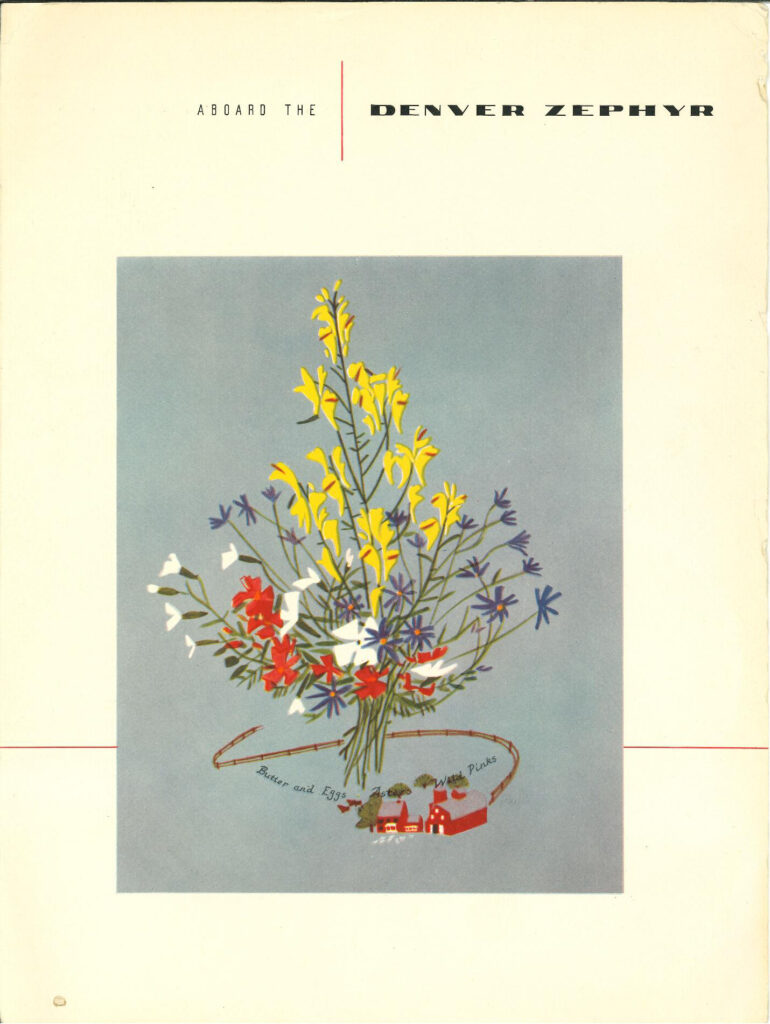
Figure 1 Denver Zephyr menu in Colorado Railroad Museum collection, featuring Colorado wildflowers on the cover.
Before we share the menus, let’s talk about the history of the Denver Zephyr. Beginning in 1936, the Denver Zephyr traveled from Chicago to Denver. Known for its speed and efficiency, it was part of a fleet of new streamlined train technology operated by the Chicago, Burlington & Quincy railroad that later included the famed California Zephyr. This train was the first overnight streamliner for the CB&Q and the consist included dining, passenger, and sleeping cars, with later upgrades including the Vista Dome cars. The predecessor to the Denver Zephyr, the Pioneer Zephyr, made the first non-stop trip between Denver and Chicago in just over 13 hours, going over 112 miles per hour in areas, inspiring the whole fleet of Zephyrs the CB&Q used.
In the Colorado Railroad Museum’s collection, there are multiple dining car menus from the Denver Zephyr. These menus featured a bouquet of Colorado wildflowers on the front, and they were available as prints to the passengers onboard. The menus note that the artwork “are reproductions of original floral paintings in the bedrooms and compartments of the Denver Zephyr” and that “the dining car steward will gladly present you with reproductions, suitable for framing.” Each menu notes the types of flowers found in the bouquets and when they are in season (figures 3a and 3b). One of the flowers commonly mentioned in the menus are daisies.
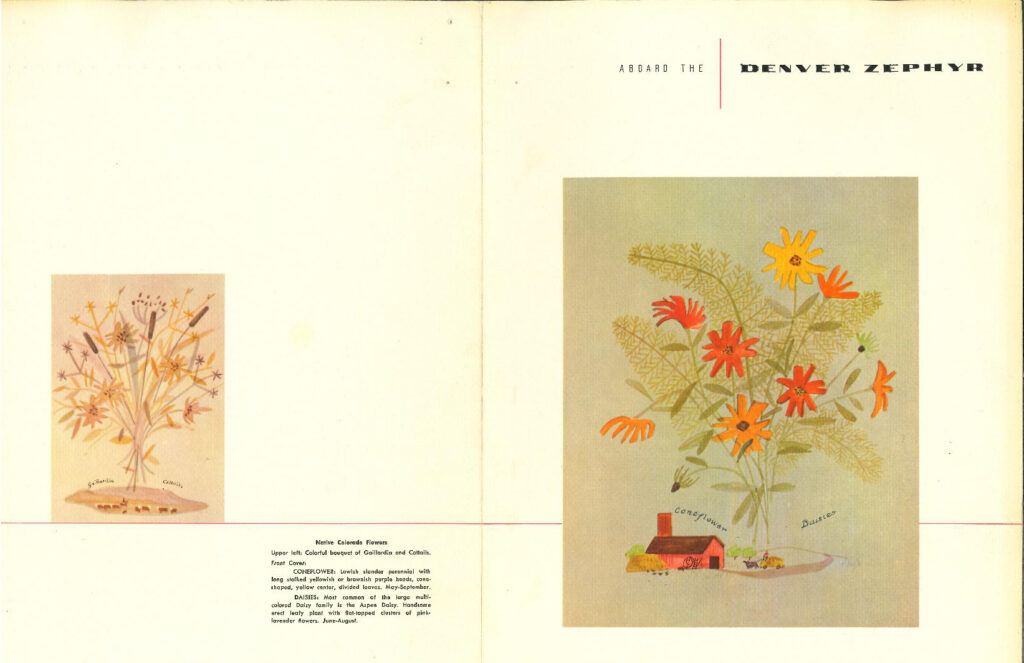
Figure 3a Denver Zephyr menu front and back with text pointing out the flowers and when they are in season, CRRM collection.
Menus and paintings aren’t the only way in which railroads demonstrated artistry through wildflowers. One other popular way was through railroad china. China was one of the ways that various railroads were able to establish a unique identity. One pattern, originally created in 1919 by Haviland China of France, found new life on the CB&Q—Violets and Daisies. This pattern became the standard china on CB&Q dining cars, including the California Zephyr. The Museum’s collection includes several pieces of china in this pattern, including tea and coffee cups, saucers, plates, and platters.
Before we share the recipe, let’s talk about the history of beef liver. Eating liver and other organ meats was a common practice across ancient cultures. In America, liver was not expensive as there wasn’t as much of a demand for it. As tastes evolved, liver became a popular option with its nutrient rich meat. Though the featured recipe this month is for braised rolled calf’s liver en casserole, none of the menus in the collection (or what we were able to find online) featured the dish. One menu in our collection from 1962 featured pan fried calf’s liver with bacon (see figure 7). Another CB&Q menu from 1969 featured calves liver saute with bacon or onions (figure 8). If any of our readers have any menu examples featuring braised calf liver en casserole, the Colorado Railroad Museum would like to add to its collection.
We hope you enjoyed our brief history on the Denver Zephyr, the museum’s collection of Chicago, Burlington & Quincy wildflower menus, and Violets and Daisies china. For more information on the California Zephyr, see our March 2024 post linked here. As always, if you try the recipes, let us know in the comments or on our social media pages.
Braised Rolled Calf’s Liver En Casserole, Burlington Style
Ingredients:
2 lbs. calf’s liver, cut in ¼-inch slices
¼ lb. bacon, diced
¼ lb. mushrooms, chopped
¼ lb. chopped onions
½ cup bread crumbs
2 tsp. parsley, finely chopped
2 eggs, well beaten
Salt and pepper to taste
2 ½ slices bacon
1 qt. mushroom sauce
Directions:
Remove membrane and any veins or blood clots from liver. In a medium bowl, combine chopped bacon, mushroom pieces, chopped onion, bread crumbs, chopped parsley, well-beaten eggs, salt, and pepper, and mix well. Spread this mixture over slices of calf’s liver. Roll up and place in shallow baking pan. Place ¼ slice of bacon over each roll and cook in hot oven 20-25 minutes. Remove from oven, pour mushroom sauce over, cover, and keep hot until ready to serve. Sprinkle with chopped parsley before serving.
Mushroom Sauce
Ingredients:
2 cups sliced mushrooms
3 Tbsp. butter
2 cups Espagnole sauce
2 cups tomato sauce
Juice of 1 lemon, strained
1 tsp. chopped parsley
2 Tbsp. sherry wine
Salt and pepper to taste
Directions:
Melt butter in saucepan over medium heat and sauté mushrooms until tender, about 10 minutes. Add Espagnole sauce, tomato sauce, lemon juice, chopped parsley, sherry, salt, and pepper. Bring just to boil, reduce heat and simmer to thicken slightly, about 10 minutes.
Espagnole
Espagnole is used as a base for a number of flavorful sauces cited later. It was prepared in quantity by the commissary for later use in the dining cars. A quick substitute can be made in this manner: for each cup of Espagnole called for, melt 1 tablespoon of butter over medium heat and add 1 tablespoon of flour to make a brown roux; add 1 cup of heated beef stock and add 1 tablespoon of tomato paste; stir to mix well; bring to a boil and reduce heat and simmer for 1 hour to blend flavors and thicken sauce.
BEFORE YOU BEGIN
You’ll need: small skillet, 8-quart roasting pan, 8-quart stock pot; several 12-inch square pieces of cheesecloth
Preheat oven to 400 degrees
Preparation time: 14 hours
Yield: 4 quarts
Ingredients:
2 veal shin bones or equivalent
Paprika
2 Tbsp. clear fat, melted
2 cups carrots sliced thin
2 cups sliced onions
Salt
Pepper
2 bay leaves
4 whole allspice
1 clove garlic, diced
½ cup flour
1 28-oz. can whole tomatoes
6 quarts beef stock (approximately)
Directions:
Cut meat into small pieces and crack shin bones. Place the meat and bones in the roasting pan, dust with paprika, and drizzle melted fat over all. Place in oven and brown well, about 1 hour. Add dry vegetables, dust with salt and pepper, add spices, cover, and return to oven for 30 minutes. Now dust everything with flour and return to oven uncovered until flour is browned. Remove and place in stock pot. Add tomatoes and stock sufficient to nearly fill the stock pot. Bring to a boil, reduce heat and let simmer for 10 to 12 hours. Add salt and pepper to taste. Strain well through cheesecloth and store in refrigerator until used as directed. To attain rich brown color, it is important that meat, bones, and flour be properly browned.
Recipes recorded from Dining by Rail: The History and the Recipes of America’s Golden Age of Railroad Cuisine, 1993, by James D. Porterfield.
Past Dining on the Rails Posts:
Dining on the Rails: Hashed Browned Potatoes and Potato Trains
Dining on the Rails: Champagne!
Railroad Hot Chocolate!
Pumpkin Pie!
Fred Harvey Coffee and Flank Steak
Roast Leg of Mutton
Mineral Water Lemonade
Roast Spring Lamb
Fruit Salad and Fruit Salad Dressing
Union Pacific Cole Slaw with Peppers
Bourbon Toddy
Cinnamon Toast and Children’s Menus
Harvey Girl Special Little Thin Orange Pancakes
Old Fashioned Navy Bean Soup
Apple Cider
Peach Cobbler
Barbeque
Mountain Trout
Eat like a Hobo!
Mother’s Day Shirred Eggs
How about a nice Old Fashioned?
French Toast, Anyone?
A Chocolatey Valentine’s Treat!
Western Pacific Pork Tenderloin
Cranberry Sauce
Oyster Stuffing!
Chicken Pot Pie
Chili
August 2021 – Pullman “Tom Collins” Cocktail
How about a salad?
Atchison, Topeka & Santa Fe Ham!
CRI&P’s New England Boiled Dinner
A Sweet Treat for your Valentine!
Black Eyed Peas!
Eggnog
Happy Thanksgiving!
Union Pacific Apple Pie
August 2020
July 2020
June 14, 2020
June 7, 2020
May 31, 2020
May 24, 2020
May 17, 2020
May 10, 2020
May 3, 2020
April 26, 2020
April 19, 2020
April 12, 2020
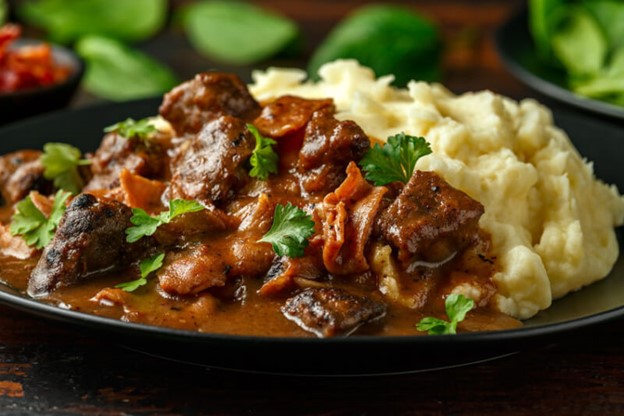
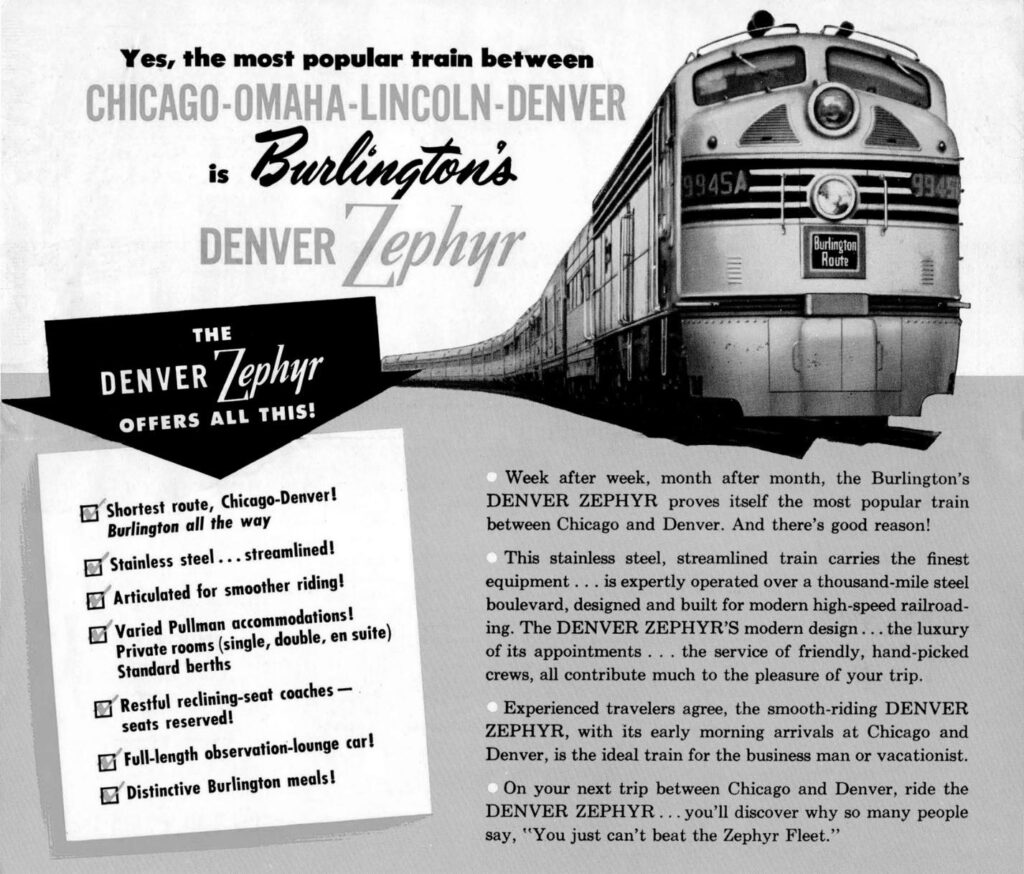
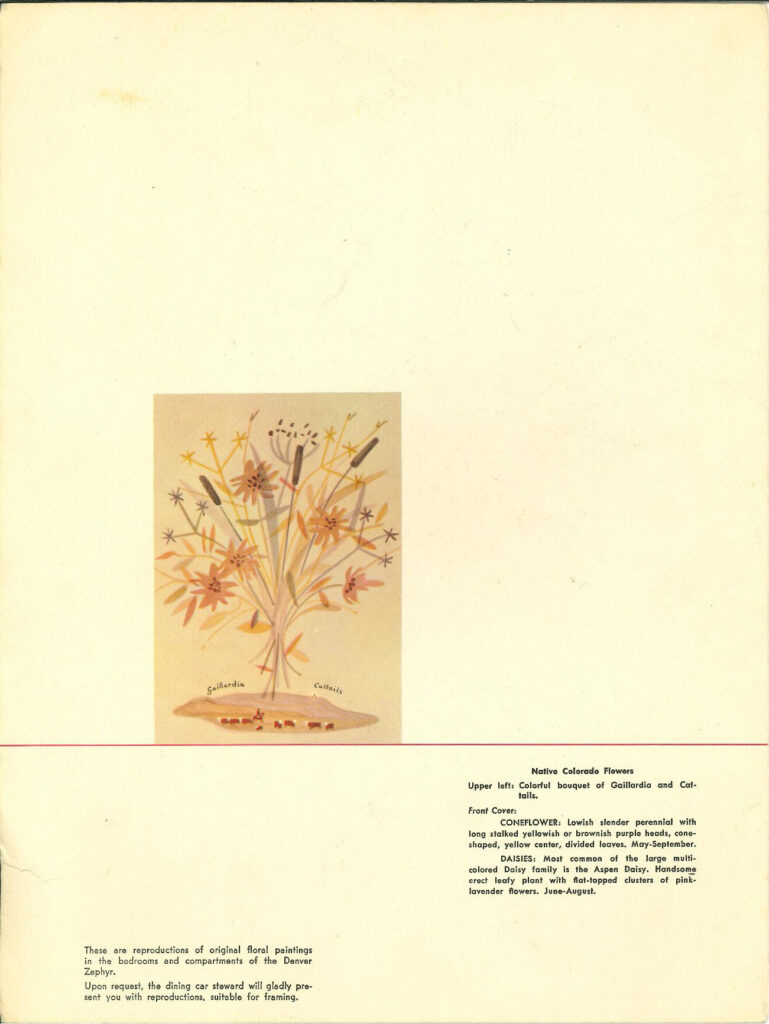

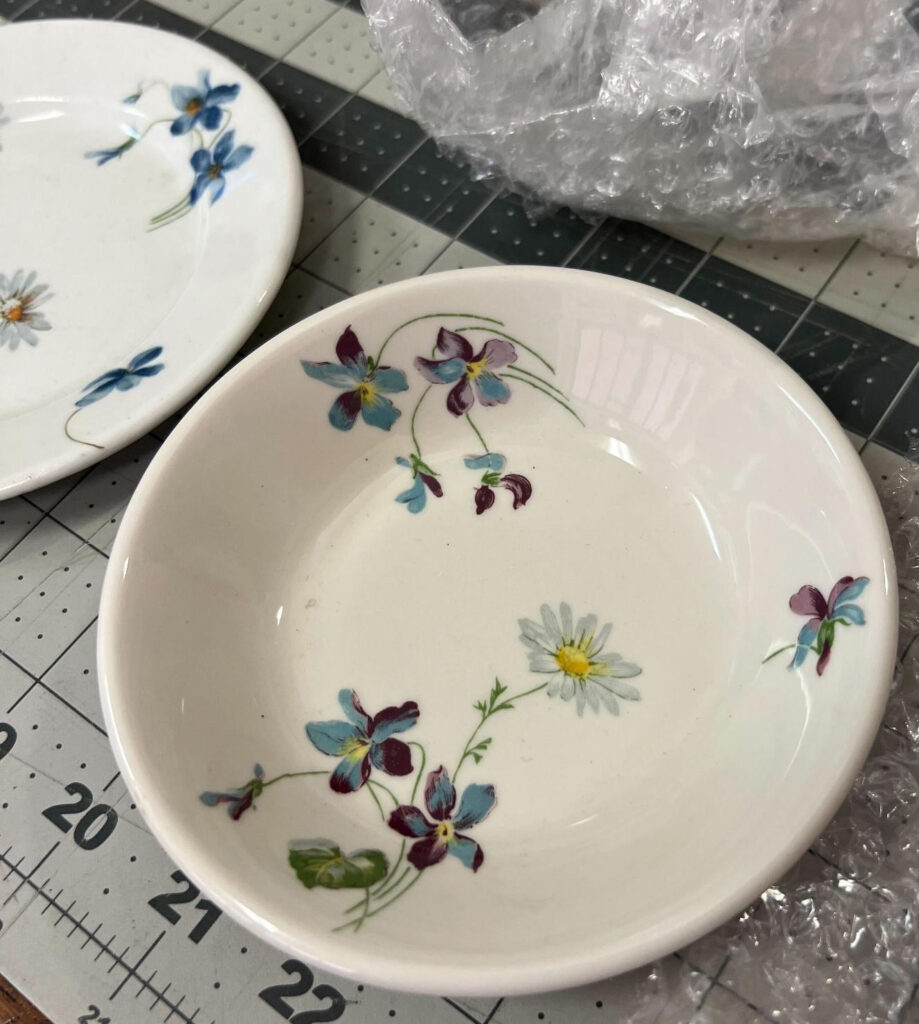
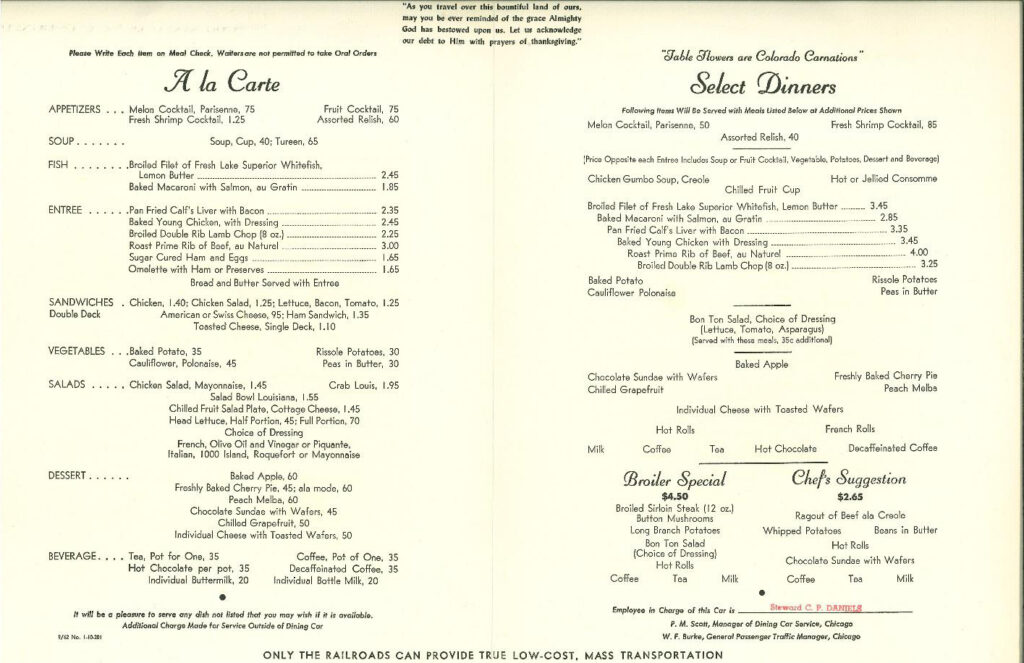
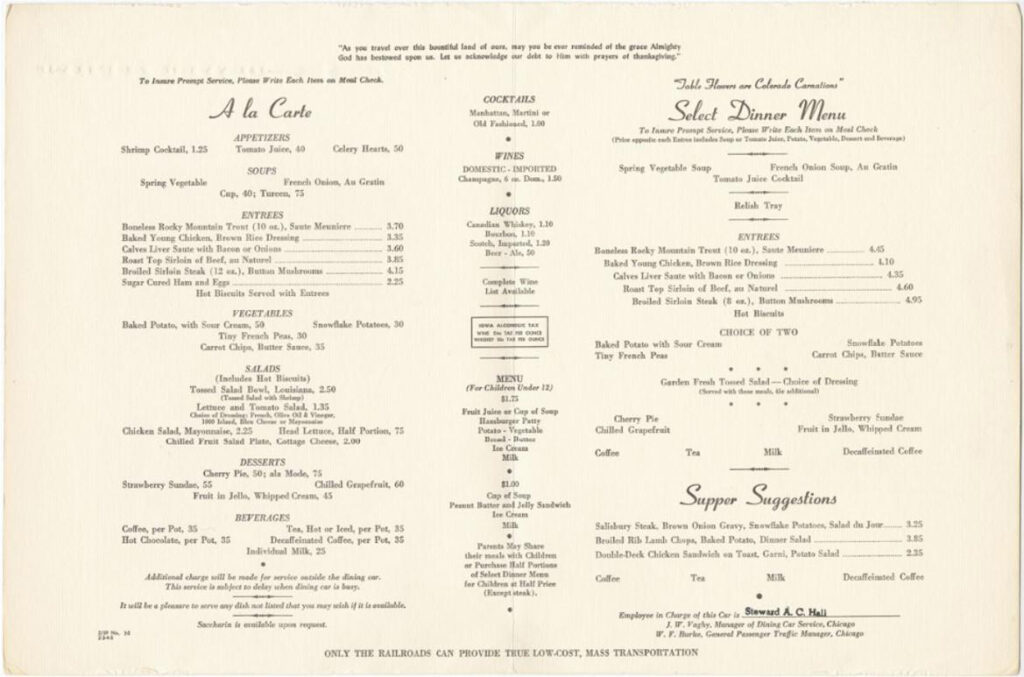
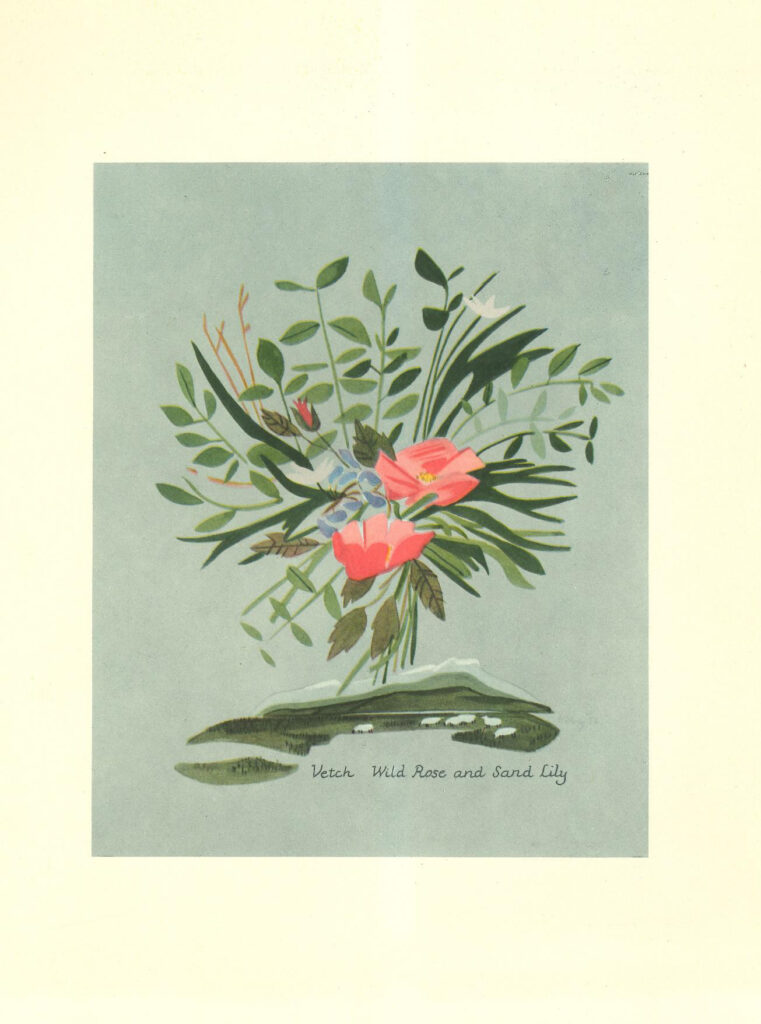
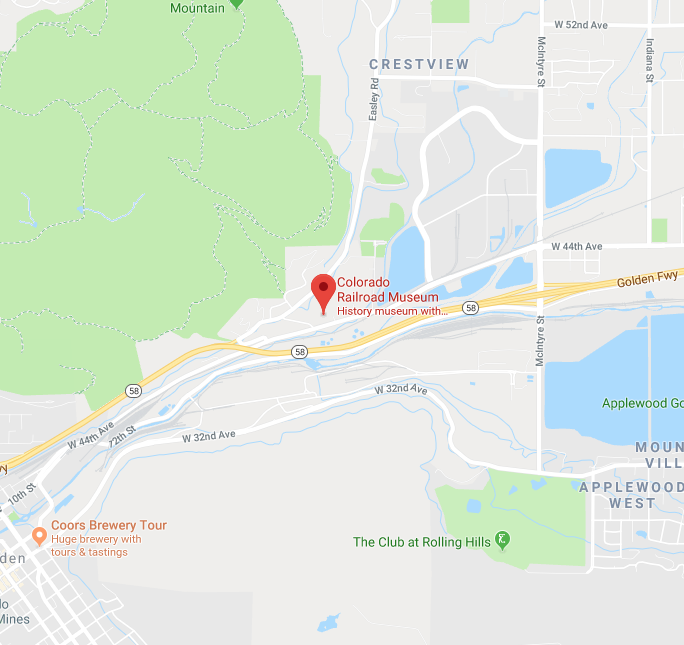

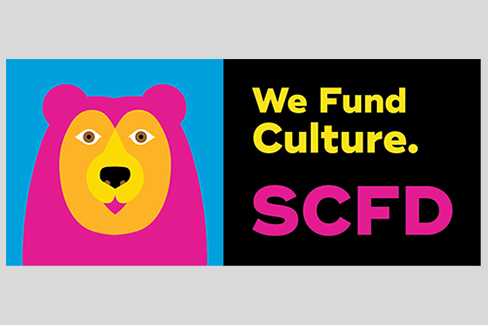
0 Comments